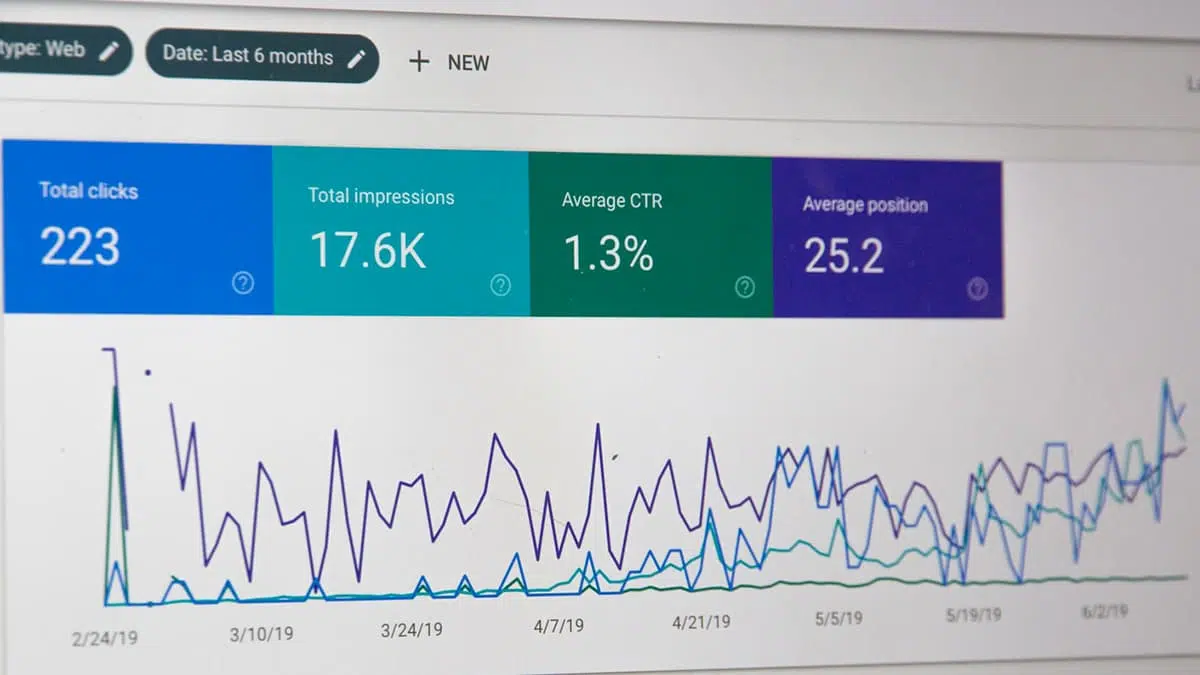Every business has goals it would like to achieve, from those pie in the sky ambitions to simply streamlining the stationery order. Any tool that can help to achieve these goals is surely worth its weight in gold.
So why are you ignoring your website data?
Because website data is meaningless? On its own, maybe. But if you apply some insight, website data can help you achieve your goals. In this post, we’ll give you hints and tips on how to measure website data, and then explore just some of the ways this data could benefit your business.
How to use your website data effectively
1. Set Goals
Data is an asset to your business. It gives you an insight into your market and customers. The collection of data and how we analyse and interpret it has a massive impact on every business – big or small. But, before you do anything, just ask yourself:
“What am I trying to achieve?”
Is it more conversions? More leads? A bigger audience? Whatever your answer, it will tell you what you should measure, and how you should measure it.
2. How to measure
So you’ve set a goal, and then undertaken an activity to achieve it. Great. But, how can you really assess whether or not the activity was a success or even measure its success? And where does website data come in?
The primary measuring method is using metrics. Metrics are quantifiable measures used to track and assess the status of a specific business process. The two main metrics are vanity and sanity metrics.
3. Don’t be vain
Vanity metrics, such as the number of likes or followers you have, might give you superficial comfort that your marketing is proving effective. In isolation such data is pretty meaningless and crucially doesn’t give you any insight into what you should be doing more or less of. They show you elements of your success but not the big picture. Yes, a follower has liked some of your content but what does this mean? Has it led to a sale, to something measurable?
For example:
- Data shows that your website is receiving less visits compared to last month.
- You pour resources into a campaign designed to attract more visitors to your site.
- The campaign ends and website visits increased.
- The campaign was a success.
This might seem like a good use of resources, but this campaign would have a fatal flaw. Crucially, you failed to consider whether less visits to its site is a bad thing.
What if, during the month when visits to your website dropped, all visitors actually made a purchase? What if your campaign simply drove more poor quality traffic to your site, and the new visitors bought nothing? Suddenly, we’re not looking at a successful campaign. We’re looking at wasted time and resources.
Therein lies the importance of sanity metrics.
4. Stay SMART
Sanity metrics are the opposite of vanity metrics. These are the metrics that tell us what we need to know to measure the health and performance of our organisation. Before beginning any marketing activity you should set yourself SMART objectives.
SMART is a marketing acronym used to aid objective setting. In order to be SMART, a objective must be:
- Specific – the objective must target a specific goal
- Measurable – the success of the goal must be measurable
- Achievable – the objective/goal can be challenging but possible.
- Realistic – the expected results of the objective must be realistic
- Time-related – the objective must be determined by a specific deadline
5. It’s all in the data
Returning to the example from point 2. What if your business had formed the following SMART objective?
“We would like to achieve a conversion rate of 25% by the end of this year”
Immediately, you can see the huge difference in the action you should take. Instead of throwing resources into a poorly-planned campaign, you’d merely have to examine your website data to find out facts like:
- What type of visitors demonstrate the highest conversion rate?
- Which channels do those visitors reach the site through?
- Where do these visitors live?
- How do they browse the website? Desktop or mobile?
- What does our conversion funnel look like?
Using just some of the simple data above, you can design a specific and targeted campaign to attract the right kind of visitor, or make changes to make buying from your website easier for your target consumer.
6. Using data to improve your business
There are literally thousands of different ways that data can be used to support your business. Ultimately, website data only becomes valuable when it can be used to anticipate, identify and fulfil customer needs in a profitable way.
In this way, your business can benefit from improvements such as lowering marketing costs, allocating resources efficiently, and higher conversion rates.
How can we help?
In this article, we’ve covered the basics of unlocking the value of your website data. Unfortunately, this isn’t a topic with a “one-size-fits-all” solution, so it may still seem confusing and difficult to know where to start.
That’s where we come in.
If you want to turn your website data into gold get in touch with the experts at Mackman at 01787 388038 or email us on customerservice@mackmangroup.co.uk
